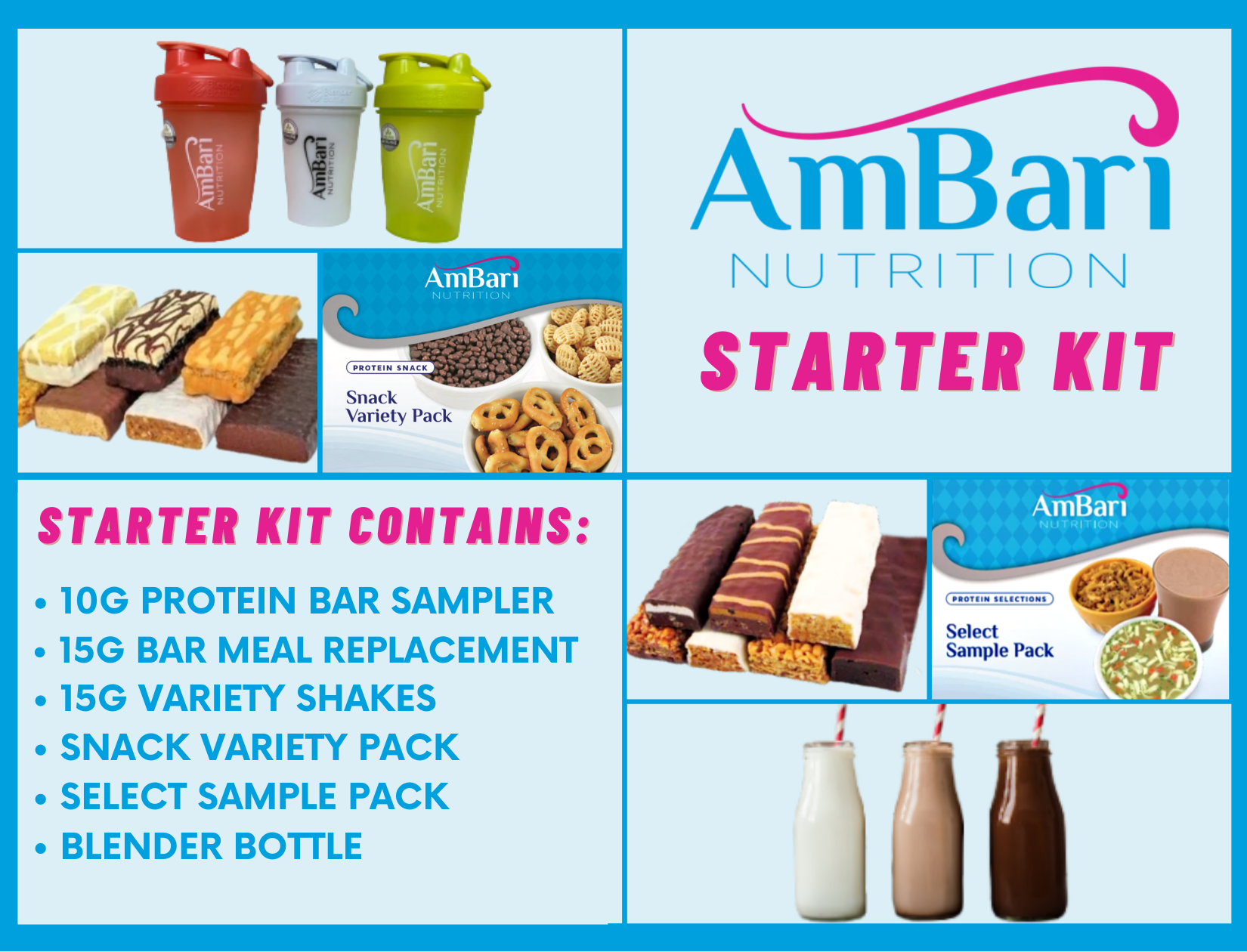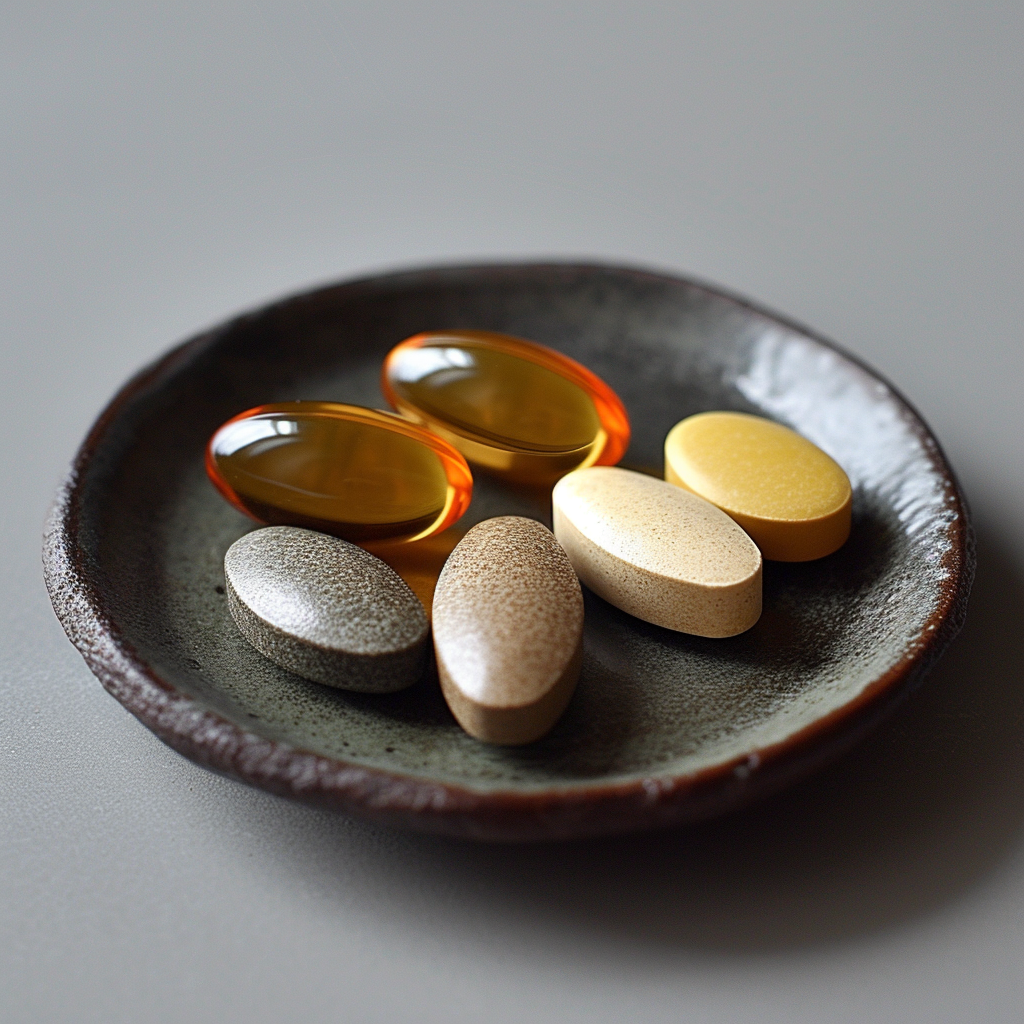Menu
Your cart is empty
Looks like you haven't added anything to your cart yet

Dumping Syndrome: Triggers, Home Treatments, & Everything You Need To Know
What is Dumping Syndrome?
Dumping syndrome, also called rapid gastric emptying, is a condition where food moves too quickly from the stomach into the small intestine. Normally, food passes from the stomach to the duodenum (first part of the small intestine) at a controlled rate through the pyloric valve. In dumping syndrome, food passes through the stomach and into the small intestine more rapidly than normal.
There are two main types of dumping syndrome:
- Early dumping syndrome - symptoms occur 10 to 30 minutes after eating
- Late dumping syndrome - symptoms occur 1 to 3 hours after eating
Episodes usually last between 30 minutes to an hour for early dumping or 1-2 hours for late dumping before symptoms resolve.

Dumping syndrome is usually caused by gastric surgery, such as:
-
Gastrectomy - Removing part or all of the stomach limits its storage capacity and disrupts hormone production needed to control food digestion. Food dumps too quickly into the small intestine.
-
Gastric bypass surgery - This procedure divides the stomach into two sections and connects the upper pouch directly to the small intestine. Food bypasses part of the stomach and quickly dumps into the small intestine from the smaller pouch.
-
Vagotomy - Cutting the vagus nerve branches that normally send signals to stimulate stomach acid and digestive enzyme production impairs proper digestion. Food isn't adequately broken down and dumps rapidly into the small intestine.
These changes enable undigested food to quickly "dump" from the stomach pouch into the small intestine, causing unpleasant symptoms. -Dr K. Huffman
In some cases, dumping syndrome can also occur in people who haven’t had surgery. This is less common and may be caused by:
- Viral gastroenteritis damaging parts of the digestive system
- Diabetes mellitus affecting digestive hormones
- Celiac disease or food allergies triggering an immune/inflammatory reaction
When part or all of the stomach is removed, it reduces levels of certain hormones and disrupts digestion. The esophagus may also no longer have a valve to prevent backflow of stomach contents.
What Triggers Dumping Syndrome
Dumping syndrome occurs when food empties from the stomach into the small intestine too rapidly. There are a few key dietary triggers that can set off this rapid gastric dumping:
-
High carb foods - Simple or refined carbs like white bread, crackers, chips, sugar, honey, and candy digest very quickly and can overwhelm the intestine. The same goes for starchy carbs like white rice or potatoes.
-
High fat foods - Greasy, fried foods and fatty meats are harder to break down. When they dump rapidly into the intestines only partly digested, it can cause irritation, nausea, and diarrhea.
-
High sugar foods and drinks - Sugary sodas, juices, chocolate, cakes, and other sweets digest fast and pull fluid into the bowels quickly via osmosis, contributing to early dumping.
-
Large meals - Eating bigger portions overfills a smaller stomach pouch and places strain on the intestinal walls as the volume dumps rapidly.
-
Individual intolerances - Some ingredients like lactose, gluten, and spicy foods may be harder to break down for some patients and hasten gastric emptying into the intestines.
Being aware what dietary components trigger rapid transit prepares patients to make smart substitutions and avoid their unique symptom triggers. Starting with small portions spaced throughout the day can also minimize dumping episodes.
Dumping Syndrome Signs and Symptoms
Dumping syndrome occurs in two main forms - early and late dumping - with different timing of symptom onset:
-
Early dumping occurs 10-30 minutes after eating a meal. Symptoms related to rapid food passing from the stomach include: abdominal pain, nausea, vomiting, diarrhea, dizziness, flushing, sweats, and rapid heartbeat. Stopping an episode involves fluids, rest, heat, and avoiding more eating/drinking until it passes.
-
Late dumping happens 1-3 hours after eating. Low blood sugar signs include: hunger, anxiety, shakiness, weakness, fatigue, rapid heart rate, and temperature regulation issues like sweating and flushing. Hypoglycemia may require glucose tablets or simplified carbs.
While the causes differ slightly, with early related to volume and late related to insulin spikes and crashes, the unifying factor is the overly rapid transit of food from the stomach to small intestine. This enables incompletely digested food to overwhelm the digestive system.
The symptoms can be intense and life-disrupting. With treatment, the prognosis for controlling dumping syndrome is good. Most patients see great improvement through dietary changes, medication, and learning methods to shorten attacks when they occur. Monitoring to prevent malnutrition and dehydration is key.
Home Treatment Options for Dumping Syndrome
In addition to medical management, there are many helpful at-home care strategies that can alleviate dumping syndrome episodes when they occur and help prevent future attacks.

During an Episode
When dumping symptoms strike, the priority is helping your body cope with the rapid fluid shifts and reducing discomfort:
-
Rest reclined - Lie down or recline with your upper body elevated 30-45° for at least 30 minutes to stabilize circulation.
-
Sip electrolyte drinks - Clear broth, coconut water, or electrolyte drinks help replenish fluids and minerals lost through diarrhea/vomiting.
-
Apply heat - Placing a heating pad or covered hot water bottle on your abdomen can help relieve cramping.
-
Distract yourself - Listen to calming music, watch television, meditate or breathe slowly to direct focus away from your symptoms.
-
Avoid stimulation - Prevent further stomach upset by not eating or drinking until the dumping episode passes.
-
Manage diarrhea - Over-the-counter anti-diarrheal medications can provide relief for early dumping bowel urgency.
-
Check glucose - Use glucose tablets or candy if late dumping hypoglycemia occurs. Inform your doctor if this persists despite diet changes.
Prevent Future Dumping Episodes
Proactive steps to take in your daily routine to prevent repeat dumping attacks include:
- Stick closely to the recommended post-surgery diet guidelines
- Eat 5-6 small, portion controlled meals spaced evenly
- Limit concentrated sweets - opt for complex carbs and fruit (not fruit juices)
- Increase fiber and protein intake between meals
- Stay well hydrated by drinking fluids between meals, not during
- Avoid drinking 30 minutes before to 2 hours after meals
- Relax after eating by lying down or going for a leisurely walk
- Note symptom triggers in a journal so your doctor can optimize treatment
- Reach/maintain goal weight to eliminate additional gastric surgery
Implementing lifestyle adaptations takes dedication but can dramatically improve comfort and quality of life on an ongoing basis. Support groups can also provide great dumping syndrome advice and support.
Fast food in general is a major trigger for dumping syndrome in bariatric patients. Check out this article to learn how you can still eat fast food as a bariatric patient.
Foods to Avoid to Prevent Dumping Syndrome
- High sugar foods and drinks
- Simple carbs like white bread
- Fried and fatty foods
- Junk food and pastries
- Carbonated sodas
- Fruit juices
- Large meals
- Personal food intolerances
Other helpful tips for managing dumping include wearing loose clothing, regularly weighing yourself to monitor fluid balance, avoiding alcohol and caffeine, reducing stress, and most importantly by following a nutritious diet of bariatric foods and products designed for a post-weight loss surgery diet.
Diagnosing Dumping Syndrome
Dumping syndrome is often first suspected based on a person's medical history and description of post-meal symptoms. Additional testing can help confirm the diagnosis and rule out other potential gastrointestinal issues.
-
Medical history - Details about any gastric surgeries and a thorough symptom timeline provide clues pointing to early or late dumping syndrome.
-
Gastric emptying study - This test tracks how quickly food empties from the stomach and enters the intestines. Rapid gastric transit times confirm rapid dumping.
-
Glucose testing - Measuring blood glucose levels before and at intervals after a test meal can aid diagnosis. An early rapid spike and subsequent crash helps identify dumping syndrome.
-
Endoscopy - A camera inserted into the upper digestive tract lets doctors visually inspect for signs of surgical complications or damage that could cause rapid gastric emptying.
-
Other tests - Ruling out gallbladder issues, celiac disease, Crohn’s disease, and other malabsorption disorders can help diagnose dumping syndrome.
Getting an accurate diagnosis lets patients get appropriate treatment and better manage this challenging condition.
Frequently Asked Questions About Dumping Syndrome
What triggers dumping syndrome?
Dumping syndrome is usually triggered by eating fast-digesting foods, high fat foods, concentrated sweets, or large meals. Eating foods high in carbohydrates, sugar, or fat can lead to the rapid gastric emptying that causes dumping symptoms.
How do you stop a dumping syndrome episode?
Tips to stop a dumping episode include: drinking sugar-free clear liquids, resting in a reclining or semi-sitting position for at least 30 minutes, applying a heating pad to the abdomen, distracting yourself with music/television, and taking prescribed glucose tablets or simplified carb snacks. Once symptoms start, it’s best not to eat or drink until the episode passes.
What foods should you avoid if you have dumping syndrome?
Foods to avoid include: foods and drinks high in sugar, simple carbohydrates like white bread, high fat fried or greasy food, junk food, pastries, carbonated soda drinks, fruit juices, large meals, and any personal food intolerances or allergy trigger foods.
How long does dumping syndrome last?
Dumping episodes usually last between 30 minutes to an hour for early dumping or 1-2 hours for late dumping before symptoms resolve.
Writer: Allison Allison is a seasoned nutritionist and writer with over 15 years in health and weight management. She's authored journals on medical weight loss and bariatric medicine, and has specialized in bariatric foods. |
Reviewed By: Dr. K. Huffman Dr. Kevin D. Huffman, D.O., is a board-certified bariatric physician renowned for his expertise in treating obesity. With over 10,000 patients and a reputation as a national leader in bariatric medicine, he has trained hundreds of healthcare providers. Dr. Huffman develops protocols and training materials sought after by medical societies, pharmaceutical companies, patients, and hospitals. |
- Choosing a selection results in a full page refresh.



































